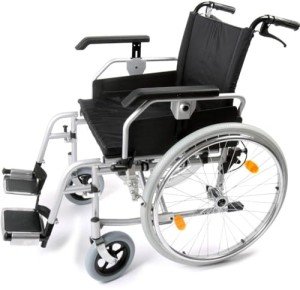Bariatric Transport Wheelchair
Developed to be pressed by caretakers, transport chairs feature smaller sized front wheels and bigger rear wheels. They are a popular choice for users with restricted mobility who can not walk individually.
When looking for a lightweight bariatric transport wheelchair, consider the user's needs and how they'll utilize the chair. Likewise, measure any doorways and other spaces the chair will travel through.
Seating
Bariatric transport chairs feature a large 22 to 36 inch large seating area that accommodates extra-large users. The chair seat is made from breathable nylon and comes with cushioned arms that can be gotten rid of and swing-away footrests. Unlike standard wheelchairs, which are perfect for typical body weights, bariatric chairs have actually much heavier frames built from reinforced products and larger rear wheels that make it simpler to press them. Speak with a mobility specialist to find out more about your alternatives and to figure out which type of wheelchair is ideal for you. Bariatric wheelchairs are typically covered by insurance coverage companies like Medi-Cal if your medical condition satisfies their protection criteria.
Frame
Bariatric transport wheelchairs utilize sturdy frames made of reinforced products like steel and have broader seats than basic wheelchairs. They are created for individuals with higher body weights and can hold a maximum weight capacity of 700 pounds. They also have bigger rear wheels, that make them easier for caregivers to press. Bariatric wheelchairs are often covered by insurance coverage such as Medi-Cal, depending on the client's specific medical needs and diagnosis. Ask a healthcare professional or mobility specialist to assist select the ideal chair for your distinct requirements.
Click on this link for more info. Medline Bariatric Transport Chair. Crimson Hammertone Frame.
Weight
While standard wheelchairs have lighter frames and smaller wheels, bariatric transport chairs feature heavier-duty products and a larger seat to accommodate users who weigh more than average. Since of simply click the up coming website page specialized style and building, they tend to cost more than basic chairs. However, some insurance programs like Medicare and Medi-Cal might cover the expense of these chairs if the user satisfies the criteria for protection. For more information about which chair is right for you, get in touch with a rehab expert today.
Wheels

Bariatric transport wheelchairs have bigger rear wheels than standard models, making them easier to push. They're often utilized in medical facilities and home settings, where the chair is pressed by caretakers. The extra-large rear wheels likewise allow the chairs to browse a range of surface, consisting of outdoors.
Standard wheelchairs typically have smaller wheels, that make them more maneuverable inside but less appropriate for everyday usage on outside streets and other surface areas. Mobility professionals recommend seeking advice from a health care provider or mobility expert to pick the very best wheelchair for your particular needs and objectives.
This heavy-duty, nylon strengthened steel transport chair supports patients as much as 500 pounds and includes a roomy 22" seat, padded desk-length armrests, swing-away footrests and hand brakes. bariatric heavy duty transport wheelchair -inch rear wheels guarantee a smooth ride in any environment.
